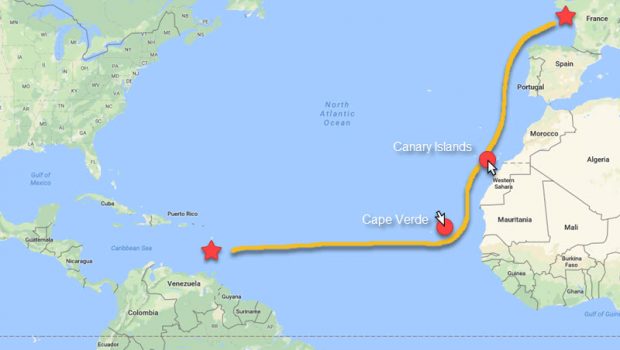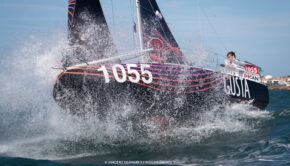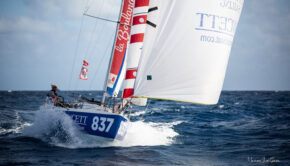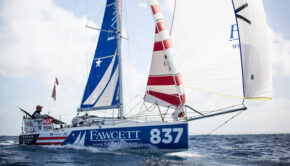Course change for Mini Transat
Published on October 31st, 2017
After 78 solo racers of the 81 starters completed the first leg of the Mini-Transat La Boulangère from France to the Canary Islands, the planned start for the final leg on November 1 to Martinique, West Indies has been dealt a course change.
Midway between the Bahamas and the Azores, a tropical wave is taking shape as an active storm formation looms. For the time being, the associated minimum low pressure is not likely to prove dangerous, but the water temperature, which is exceptionally warm for this time of year, is conditioned by a high degree of instability. As such, ultimately, the formation of a tropical storm is a plausible hypothesis.
With the routing clearly favoring a course well to the north of layline, but one that is potentially on a collision course with the tropical storm in question, race management will now detour the fleet south through Cape Verde, a volcanic archipelago along the coast of Africa.
Wishing to avoid taking the risk of sending the fleet of 6.50m boats into winds in excess of 45 knots and wild seas, the fleet will pass through a compulsory gate between the islands of Santo Antao, to the north and Sao Vicente to the south.
In terms of distance, this equates to a detour of around 200 miles in relation to the direct route, or one long extra day to make Martinique. On the upside comes the guarantee that everyone will be sufficiently far away from the potential centre of the tropical low.
The passage via the Cape Verde islands changes the strategic tone somewhat. Some sailors were hoping for a wide open playing field, but now they will be forced into some more refined navigation, where the timing of the gybes is sure to count a lot more than any choices about major options.
Class news – Race news – Tracking – Facebook
Race Facts
· 21st edition
· 4,050 miles to cover between La Rochelle – Las Palmas in Gran Canaria and Le Marin (Martinique)
· 81 skippers at the start
· 10 women
· 11 nationalities
· 20 years: age of the youngest skipper in the race: Erwan Le Draoulec
· 62 years: age of the oldest skipper in the race: Fred Guérin
· 25 prototypes
· 56 production boats
· 66 rookies
· 15 ‘repeat offenders’
Background
With an overall length of 6.50m and a sail area pushed to the extreme at times, the Mini Class offers incredibly seaworthy boats. Subjected to rather draconian righting tests and equipped with reserve buoyancy making them unsinkable, the boats are capable of posting amazing performances in downwind conditions… most often to the detriment of comfort, which is rudimentary to say the least.
The Mini Transat has two legs to carry the fleet from La Rochelle, France to Martinique, West Indies. The leg from La Rochelle to Las Palmas de Gran Canaria is a perfect introduction to proceedings before taking the big transatlantic leap.
The first leg starts on October 1, with the fleet thrust into the Bay of Biscay which can be tricky to negotiate in autumn, while the dreaded rounding of Cape Finisterre on the north-west tip of Spain marks a kind of prequel to the descent along the coast of Portugal. Statistically, this section involves downwind conditions, often coloured by strong winds and heavy seas. Making landfall in the Canaries requires finesse and highly developed strategic know-how.
The second leg begins on November 1, with the solo sailors most often carried along by the trade wind in what tends to be a little over two weeks at sea on average. At this point, there’s no way out: en route to the West Indies, there are no ports of call. The sailors have to rely entirely upon themselves to make Martinique.
Source: Aurélie BARGAT | Effets Mer









 We’ll keep your information safe.
We’ll keep your information safe.